Budget headsets rarely pull me in, yet I kept seeing the Senzer SG500 mentioned in comment threads and low-cost roundup lists. Curiosity won. I folded it into my daily mix of late-night shooters, mid-day voice calls, and a few long video-edit sessions to find out whether a sub-$50 model could feel purposeful rather than disposable. What follows is a straight account of how the SG500 behaved once the novelty of a new box wore off.
Unboxing and First Impressions
The SG500 arrives in a plain cardboard sleeve, matte black with a single product photo and a tight column of features. Inside, the headset lies folded inside a molded tray, joined by a detachable boom mic and a braided 3.5 mm TRRS cable that hosts a volume wheel and a mute switch.
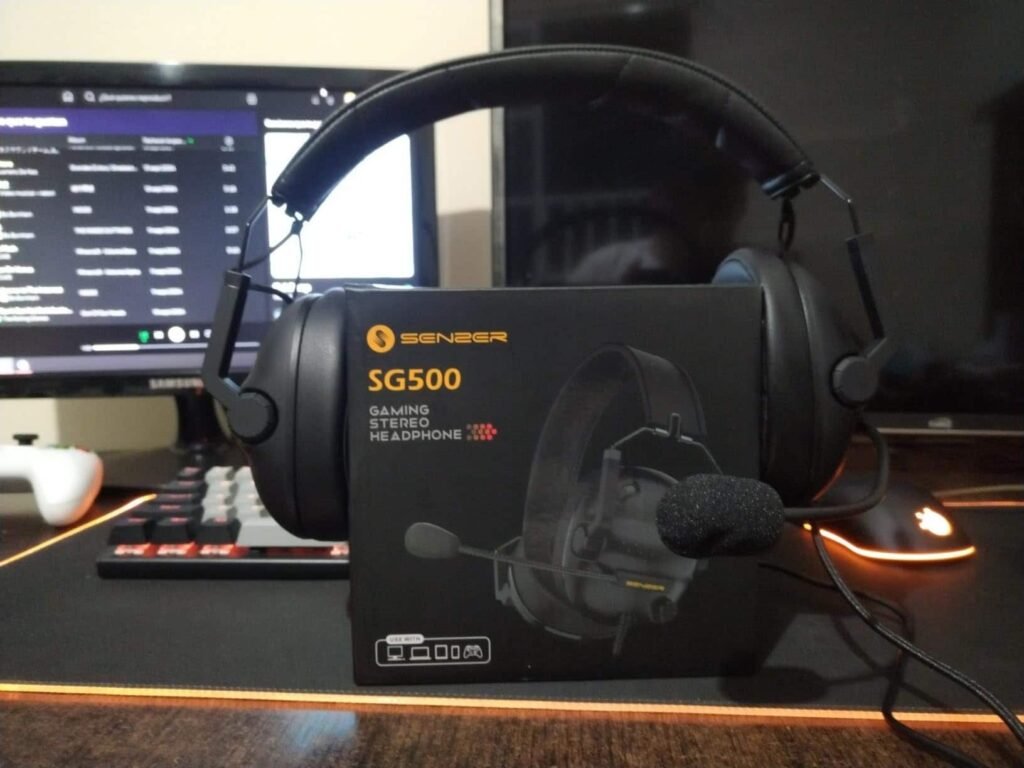
No adapters, no stickers, no soft pouch—just the essentials. The frame feels lighter than the silhouette hints (a hair under 0.66 lb on my scale), yet early flex tests produced no creaks, and the folding hinges stayed firm rather than flimsy.
Design and Build Quality
Senzer keeps styling subdued: matte plastic shells, a low-key logo, and just enough contouring to avoid looking generic. Telescoping arms move with a gentle click, holding their place once you set your size. The earcups rotate flat, so the headset packs thin in a laptop sleeve.
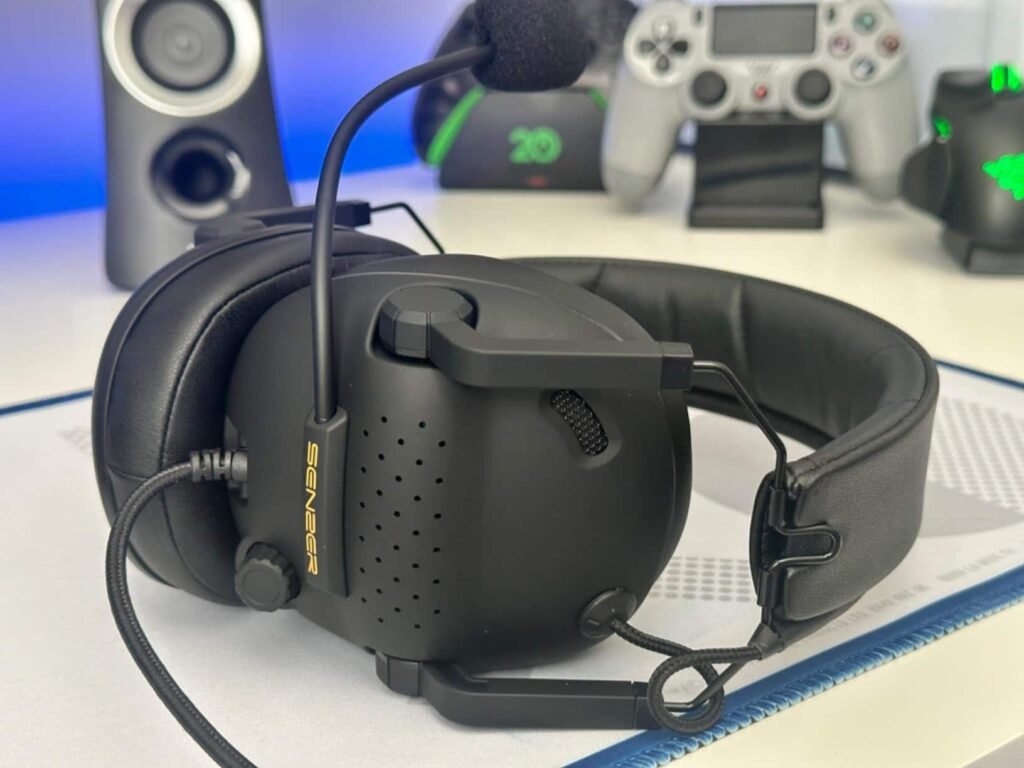
Pads attach with hidden magnets, popping off for cleaning in seconds—a trick I’ve only seen on pricier models. All exposed surfaces wipe clean, and there are no loose wires to snag. After ten days of desk drops and one accidental backpack toss, nothing rattled loose.
Comfort Over Marathon Sessions
Comfort is where the SG500 punches above class. Memory-foam cushions surround the ear fully without pinching cartilage; the clamp is secure yet easy-going.
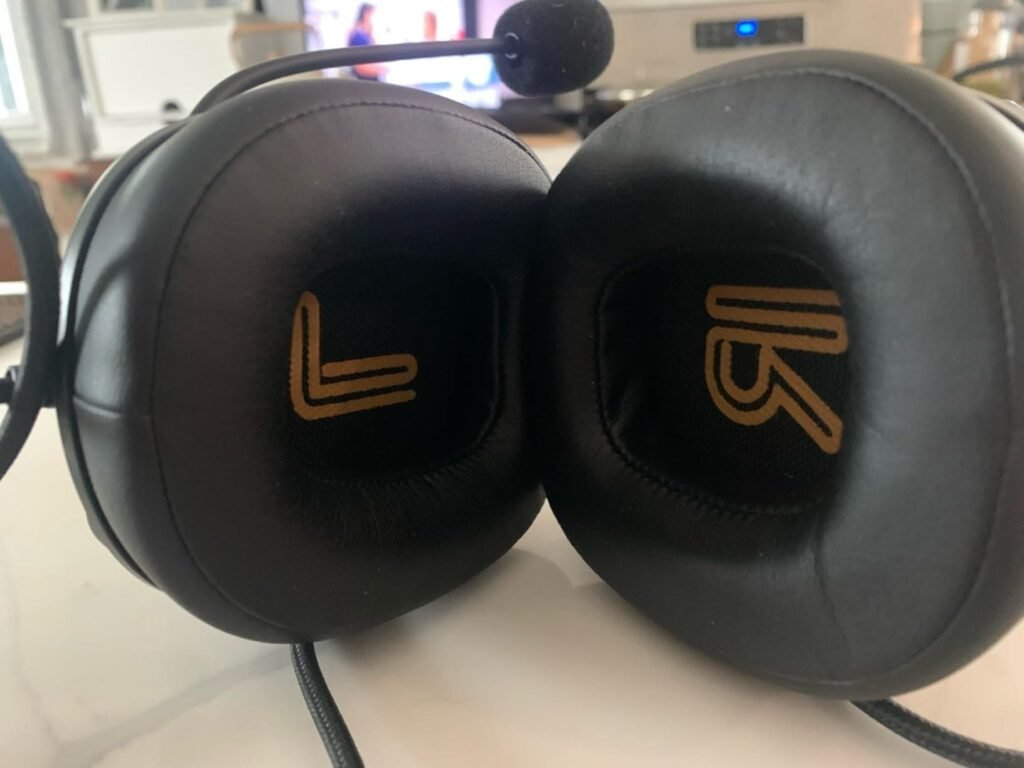
I logged three separate four-hour gaming blocks at room temps around 25 °C and never felt a hotspot on the crown or pressure on the lobes. Heat builds slowly, but a short stretch break keeps things fresh. The headband pad is thin, though the light chassis makes that a non-issue. For an entry-level headset, endurance is simply better than expected.
Controls and Everyday Handling
The inline remote lets you thumb volume or flick mute without hunting for on-cup buttons. Its one flaw is position: it sits high on the cable, so it can pull at a shirt collar if you stand. The detachable mic locates in a firm mini-jack on the left cup; once bent into shape, it stays put. Folding the cups flat feels natural when you drop the headset around a neck during breaks, and the hinges are stiff enough that the cups don’t splay when you set the SG500 down.
Connectivity, Range, and Latency
Analog simplicity rules here. A single 3.5 mm plug carries audio and mic, so the SG500 works on PC, console controllers, Switch, and phones with a jack or dongle. No drivers, no firmware updates, and zero electronic lag—the only latency comes from your device buffer.
Sound-Test Method
I rotated the headset through a Focusrite Scarlett Solo, a PS5 DualSense jack, and a MacBook Air. Source material included lossless FLAC tracks, uncompressed gameplay captures, and raw podcast dialogue. SPL was matched to 77 dB with pink noise using a MiniDSP EARS rig for reference against a Sennheiser HD 560 S.
Audio Performance – Wired Mode
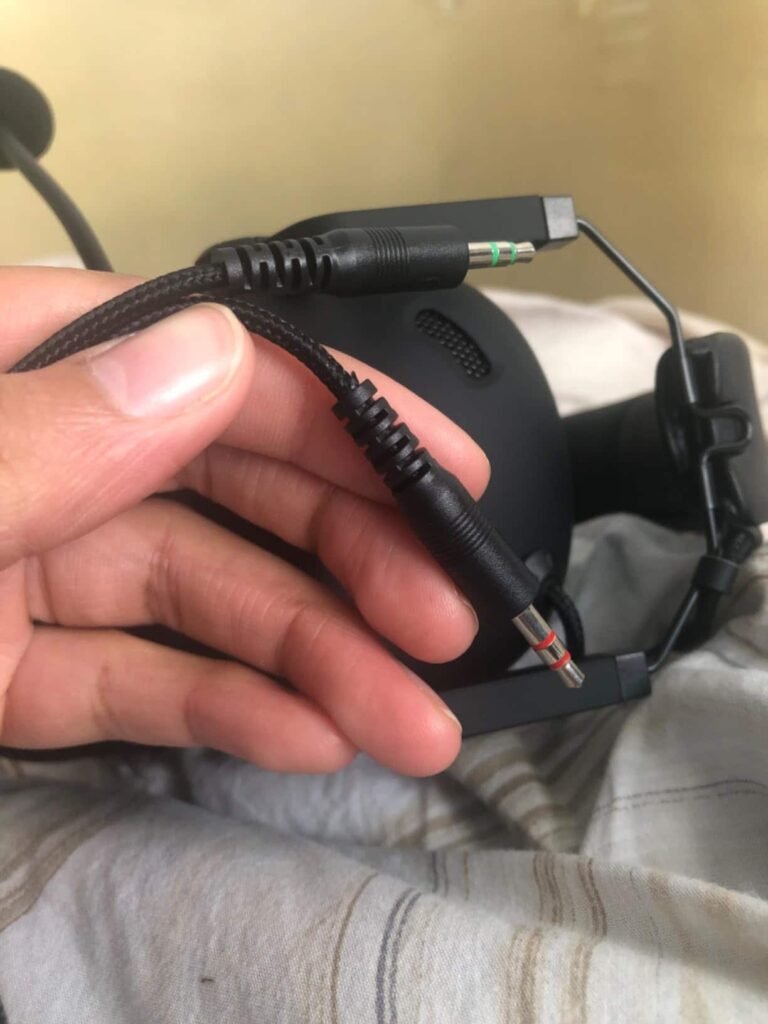
Bass and Low Mids
The 50 mm drivers dig low enough to give explosions weight without smearing into the mids. Billie Eilish’s “Oxytocin” lands with convincing punch, yet bass doesn’t linger longer than it should.
Midrange Clarity
Voices sit a touch behind the rhythm section in busy mixes, but speech in podcasts and in-game comms stays clear. Electric guitars keep bite without turning harsh.
Treble Detail
A gentle lift near 8 kHz adds air to cymbals and footstep transients, tapering off before sibilance sets in. It’s a safe tuning that avoids listener fatigue, though audiophiles may crave more sparkle above 12 kHz.
Soundstage and Imaging
Closed-back width is modest, yet positional cues in Counter-Strike 2 stayed precise enough to trace flanks without second-guessing. Depth layering is limited, but left-right placement is honest.
Microphone Quality and Chat
The boom mic delivers a clean, mid-forward capture that teammates described as “radio-like” rather than “webcam tinny.” It rejects moderate keyboard clatter and AC hum without software tricks.
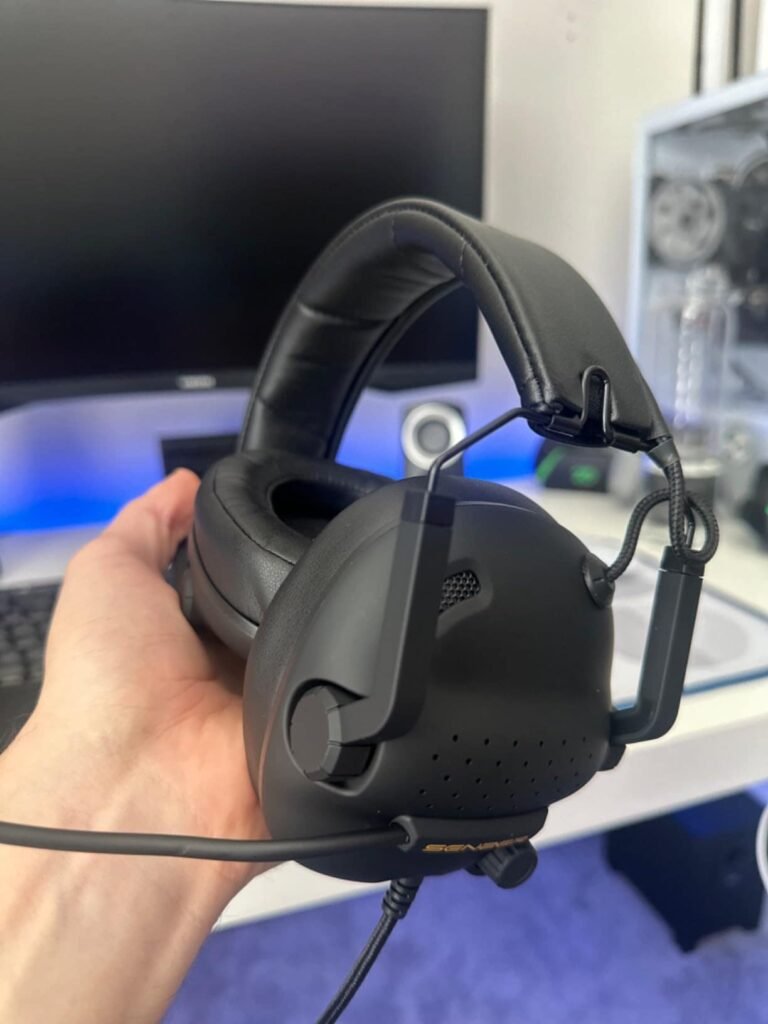
For voiceovers you’d still want a dedicated condenser, but for Discord, Zoom, or in-game call-outs, it gets the job done.
Gaming Experience
Fast transient response keeps footsteps distinct from ambient effects, and punchy bass adds thrill without drowning cues.
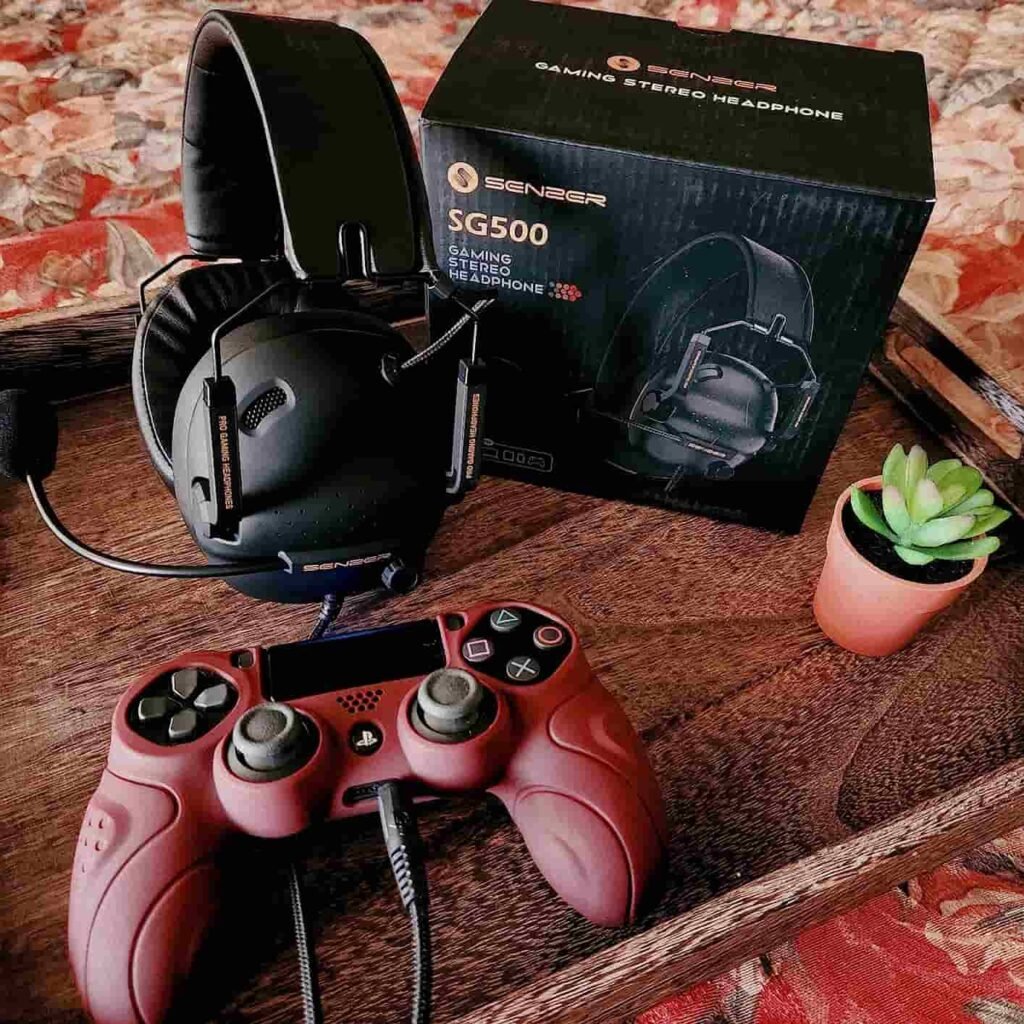
After three ranked sessions in Valorant, I never blamed the headset for a missed angle. Isolation is moderate, so loud mechanical keyboards nearby will bleed in, but the seal blocks most background chatter.
Music and Movies
On well-recorded jazz trios, the SG500 portrays upright bass resonance accurately and leaves enough room for piano harmonics. Heavy-compressed pop exposes the recessed mids and can feel a bit hollow, yet acoustic tracks and dialogue-driven films benefit from the relaxed tuning. Blockbuster LFE lacks the sub-bass rumble of V-shaped consumer sets, so bass heads may look elsewhere.
Final Verdict
The SG500 keeps its promises. It’s light, comfortable, structurally sound, and sonically competent for both games and everyday media. No software and no battery mean fewer failure points, and the price leaves room in the budget for a better mic or external DAC later.
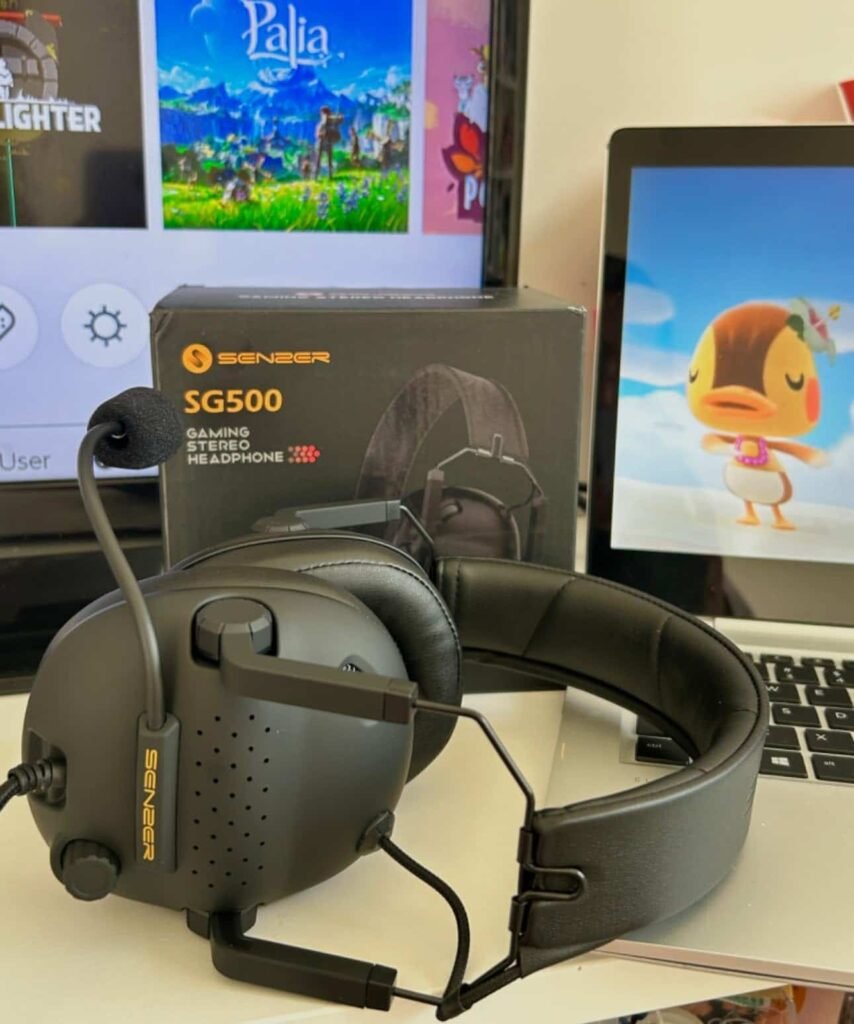
If Senzer adds a detachable main cable and nudges the midrange forward in a future revision, this headset could become the benchmark for entry-level gear. In its current form, it’s the budget option I’d keep around for travel or a spare station without hesitation.
Pros
- Memory-foam pads and gentle clamp stay comfortable for marathon sessions
- Lightweight, foldable frame survives daily knocks
- Clean, mid-forward mic with physical mute switch
- Honest stereo imaging with enough bass punch for games
- Magnetic ear pads remove easily for cleaning or upgrades
- Universal 3.5 mm plug, no drivers or batteries to worry about
Cons
- Midrange detail sits a step back in busy music mixes
- All-plastic construction lacks the longevity of metal-reinforced frames
- Inline control module sits high and can tug on clothing
- No virtual surround or software EQ options
- Box includes no carrying pouch or spare accessories